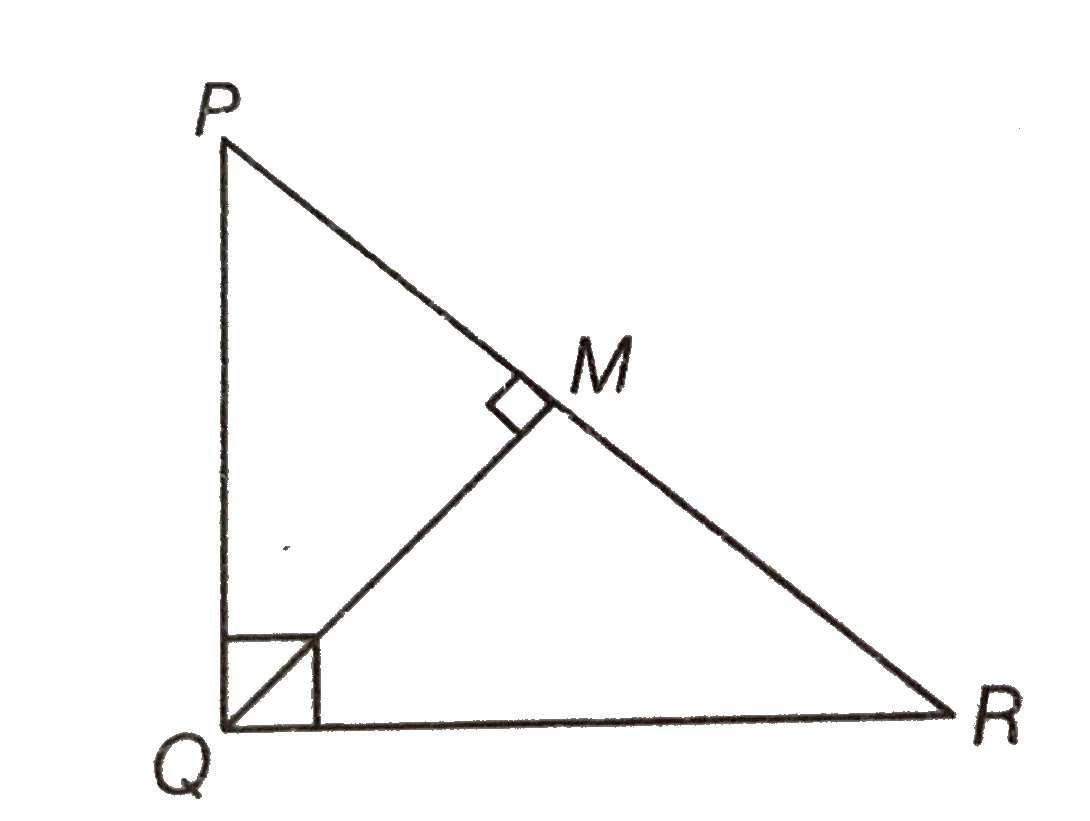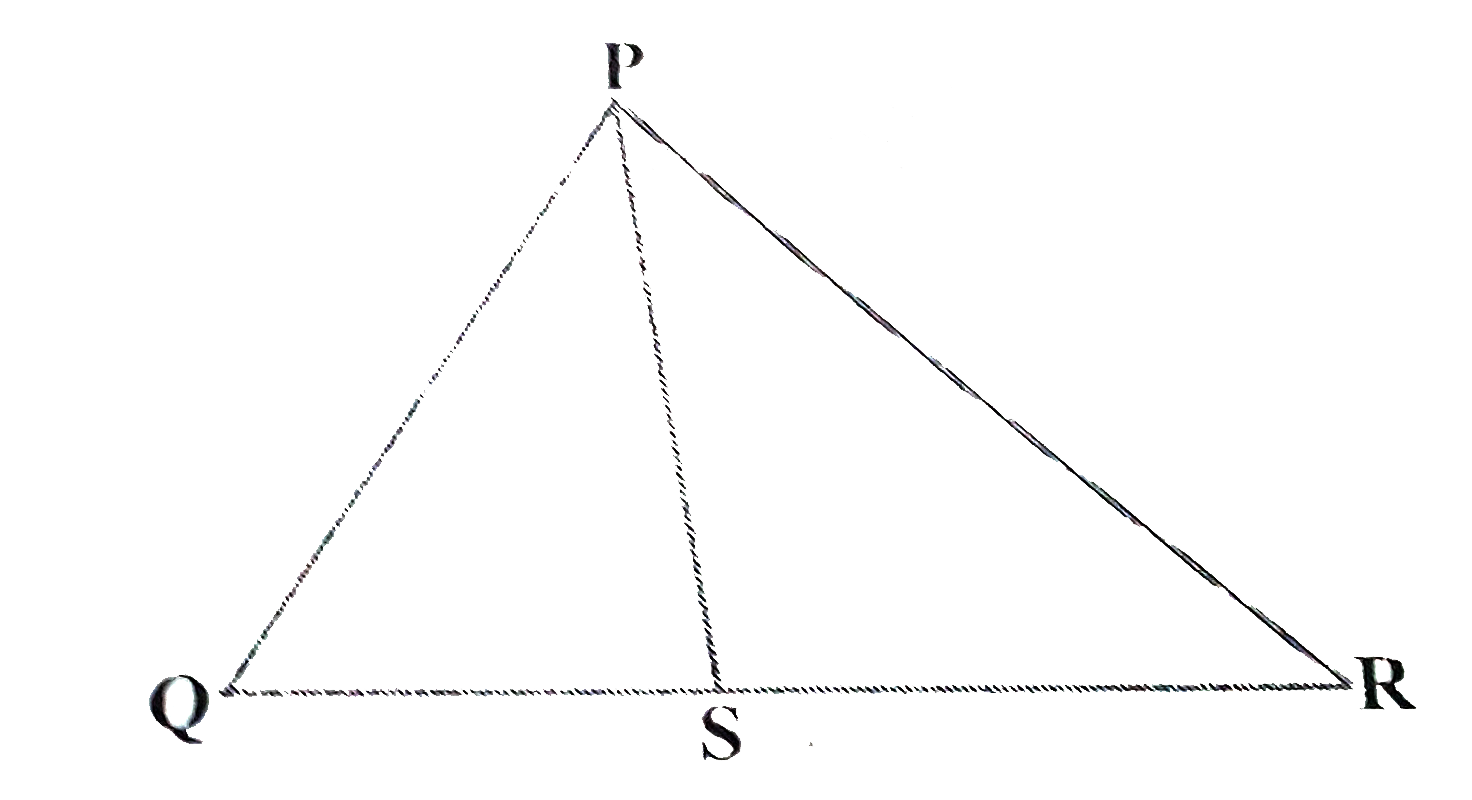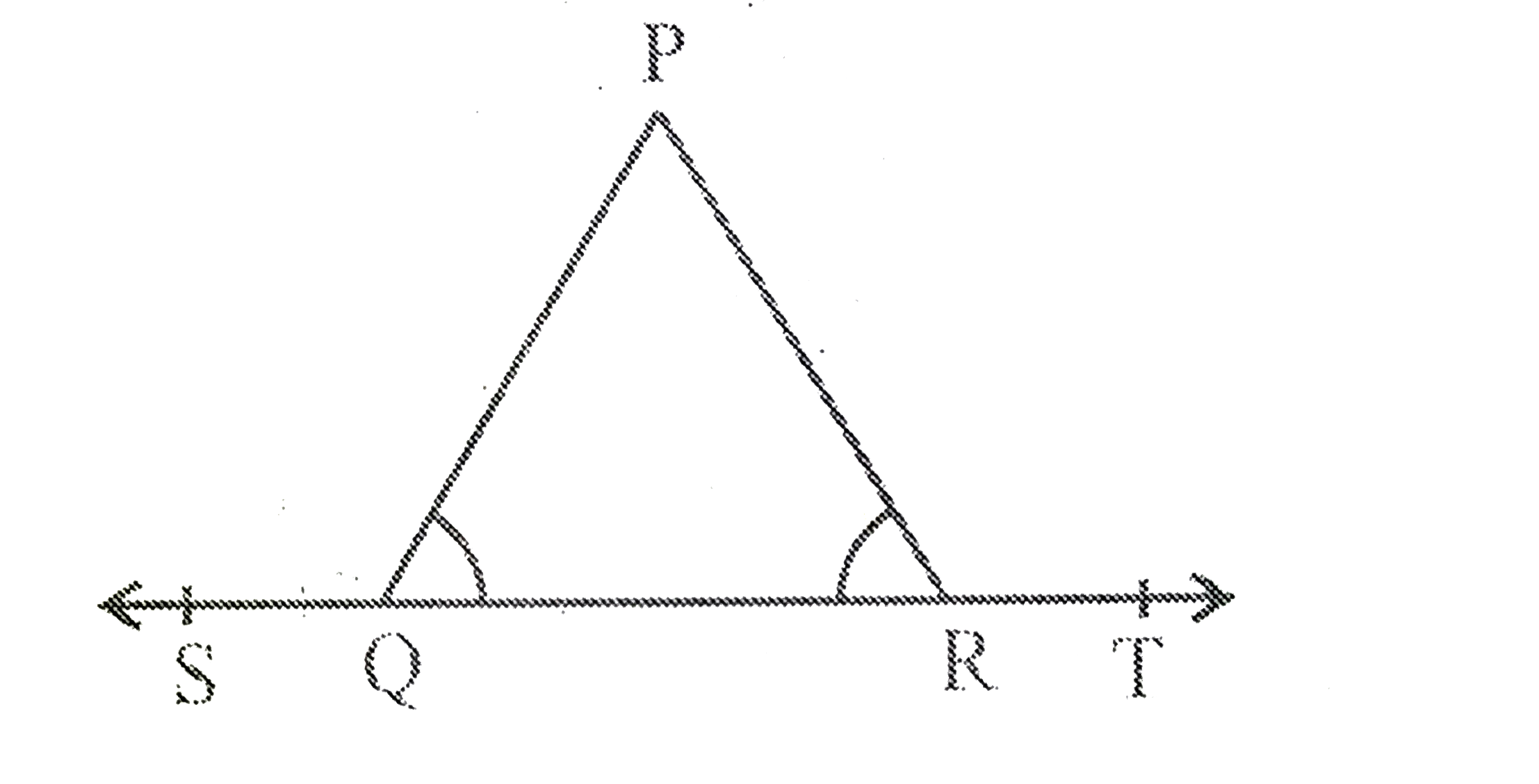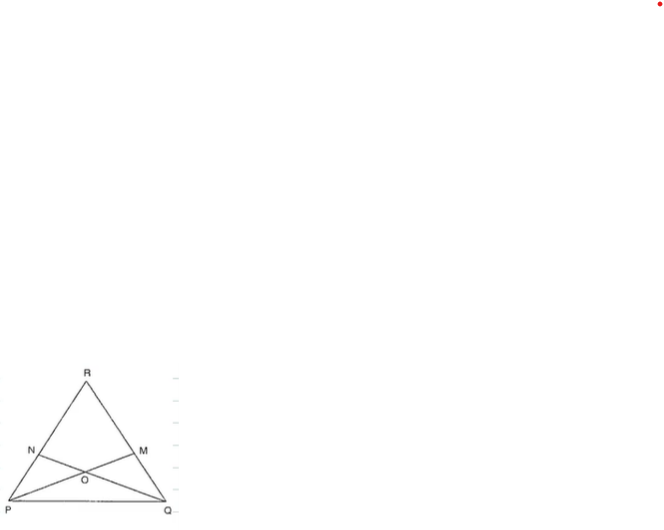In PQR, QM⊥PR and PR2−PQ2=QR2.Prove that QM2=PM×MR
Video Solution
Text Solution
Given in ΔPQR, PR2−PQ2=QR2andQM⊥PR
To prove QM2=PM×MR
Proof Since, PR2−PQ2=QR2
⇒PR2=PQ2+QR2

So, ΔPQR is right angled triangle at Q.
In ΔPQR iss right angled triangle at Q.
In ΔQMR and ΔPMQ,
∠M=∠M [each 90∘]
∠MQR=∠QPM [each equal to 90∘−'∠R]
ΔQMR~ΔPMQ [by AAA similarity criterion]
Now, using property of area of similar triangles, we get
ar(ΔQMR)ar(ΔPMQ)=(QM)2(PM)2
⇒12×RM×QM12×PM×QM=(QM)2(PM)2 [∵ areaa of triangle=12×base×height]
⇒QM2=PM×RM Hence proved.
|
Updated on:21/07/2023
Topper's Solved these Questions
Similar Questions
Knowledge Check
- Question 1 - Select One
if P:Q:R=2:3:4andP2+Q2+R2=11600, then find P+Q+R, where P,Q and R are whole numbers.
A15B16C18D20 - Question 2 - Select One
If P:Q:R=2:3:4 and P2+Q2+R2=11600,
then find (P+Q−R)A15B16C18D20 - Question 3 - Select One
If 3P = 2Q and 2Q = 3R, then what is P : Q : R?
A6:9:1B2:3:2C4:6:9D4:6:1
In figure PS is the bisector of ∠QPRof ΔPQR. Prove that QSSR=PQPR.
 View Solution
View SolutionIn ΔPQR, if PQ=QR and L,M and N are the mid-points of the sides PQ,QR and RP respectively. Prove that LN=MN.
 View Solution
View SolutionIn Fig. 6.15, ∠PQR=∠PRQ, then prove that ∠PQS=∠PRT.
 View Solution
View SolutionIn Figure, ∠QPR=∠PQR and M and N are respectively on sides QR and PR of PQR such that QM=PN . Prove that OP=OQ, where O is the point of intersection of PM and QN.
 View Solution
View SolutionIn PQR , M and N are points on sides PQ and PR respectively such that PM=15cm and NR=8cm . If PQ=25cm and PR=20cm state whether MNQR .
View Solution


